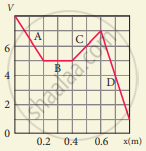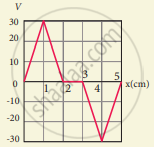Advertisements
Advertisements
प्रश्न
A point charge of +10 µC is placed at a distance of 20 cm from another identical point charge of +10 µC. A point charge of -2 µC is moved from point a to b as shown in the figure. Calculate the change in potential energy of the system? Interpret your result.
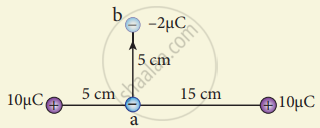
उत्तर
q1 = 10μC = 10 x 10-6 C
q2 = 2μC = -2 x 10-6 C
distance, r = 5cm = 5 x 10-2 m
Change in potential energy,
`Delta "U" = (9 xx 10^9 xx 10 xx 10^-6 xx (- 2 xx 10^-6))/(5 xx 10^-2)`
= -36 × 1 × 109 × 10-12 × 102 = -36 × 10-1
∆ U = -3.6 J
Negative sign implies that to move the charge -2pC no external work is required. The system spends its stored energy to move the charge from point a to point b.
∆ U = -3.6 J, negative sign implies that to move the charge -2μC no external work is required. System spends its stored energy to move the charge from point a to point b.
APPEARS IN
संबंधित प्रश्न
Which charge configuration produces a uniform electric field?
An electric field `vec"E" = 10 xx hat"i"` exists in a certain region of space. Then the potential difference V = Vo – VA, where Vo is the potential at the origin and VA is the potential at x = 2 m is:
A thin conducting spherical shell of radius R has a charge Q which is uniformly distributed on its surface. The correct plot for electrostatic potential due to this spherical shell is
Give the relation between electric field and electric potential.
Derive an expression for electrostatic potential due to a point charge.
Five identical charges Q are placed equidistant on a semicircle as shown in the figure. Another point charge q is kept at the center of the circle of radius R. Calculate the electrostatic force experienced by the charge q.
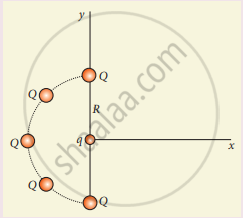
Draw the free body diagram for the following charges as shown in the following figure.

Draw the free body diagram for the following charges as shown in the following figure.
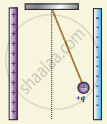
Draw the free body diagram for the following charges as shown in the following figure.

The electrostatic potential is given as a function of x in figure (a) and (b). Calculate the corresponding electric fields in regions A, B, C and D. Plot the electric field as a function of x for figure (b).
